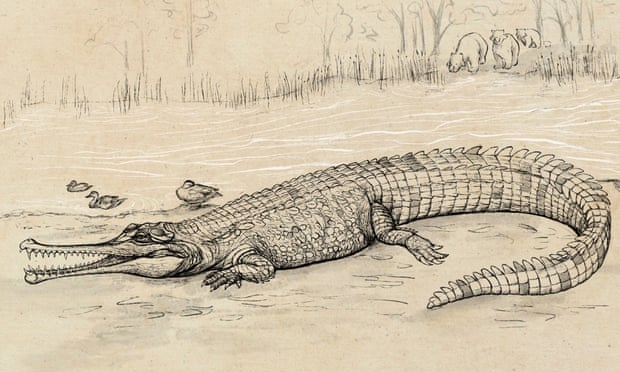Prehistoric giant ‘river boss’ crocodile identified by Queensland scientists
The reptile, named Gunggamarandu maunala, is thought to have grown up to seven metres long.
A prehistoric species of crocodile that roamed the waterways of south-east Queensland, and is thought to be the largest to have lived in Australia, has been identified by researchers at the University of Queensland.
Gunggamarandu maunala, whose name means “river boss” and incorporates words from the languages of the First Nations peoples from the area where the fossil was discovered, is believed to have grown up to seven metres long.
Jorgo Ristevski, a PhD candidate from UQ’s school of biological sciences, says it’s difficult to estimate the exact size of the crocodile, as researchers only have the back of the skull.
“But it was big,” said Ristevski, who led the research team. “We estimate the skull would have been at least 80cm long and, based on comparisons with living crocs, this indicates a total body length of around seven metres.”
This suggested Gunggamarandu maunala rivalled the largest Indo-Pacific saltwater crocodile recorded to date, Ristevski said.
The fossil used for analysis was discovered in the 19th century and is believed to be up to 5m years old. Dr Steven Salisbury, a paleontologist, said the piece of skull was discovered about 1875.
“Since its initial discovery, the skull was kept safe in the collection of the Queensland Museum, although it didn’t reveal its secrets for over a hundred years,” he said.
A digital reconstruction of the skull using CT scans helped researchers learn more about the anatomy of the crocodile’s brain cavity.
“That can now be used by other scientists for comparisons with other extinct crocodilians from around the world,” Ristevski said.
Scientists are still not certain how the species became extinct but they have some theories.
“It’s very likely related to the gradual drying of the Australian continent over the last few million years, and in particular over the last few 100,000 years,” Salisbury said.
“The big river systems that once supported crocs like this have long since dried up from south-east Queensland, and with them so have the crocs.”
The name of the species uses words from the languages of the Barunggam and Waka Waka peoples of the Darling Downs area. Gunggamarandu means “river boss” and maunala means “hole head”, in reference to the openings on the top of the crocodile’s skull.


